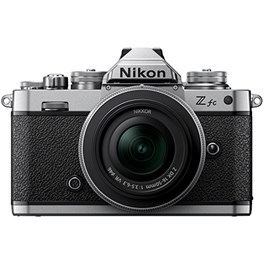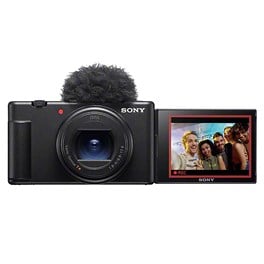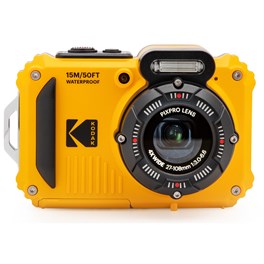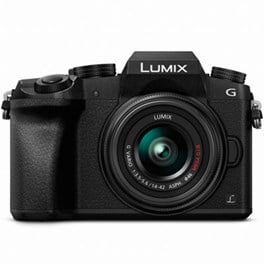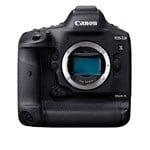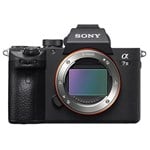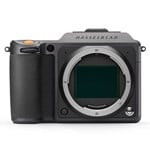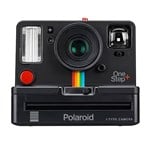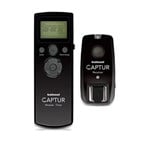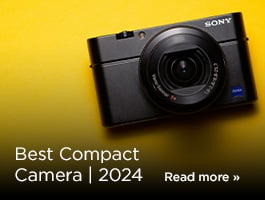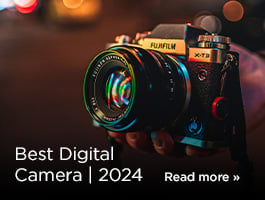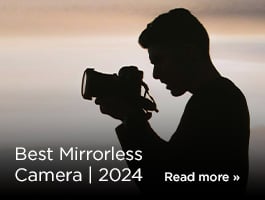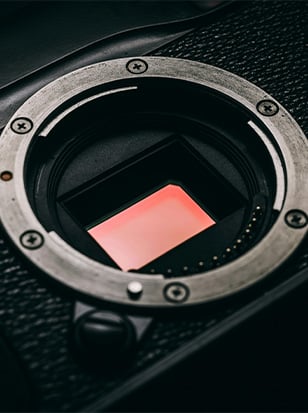
Travel and lifestyle influencers have to wear many hats, and as such you’ll need a camera that can keep up. It’s no longer enough to be able to snap a pretty picture of a flat lay – being an influencer nowadays means being equally adept at producing not just appealing photography, but also great-looking (and great-sounding video). You’ll want to be able to achieve all this with a single camera, one that doesn’t cost too much, and ideally one that has a bit of style to it, both in terms of looks and the images it produces.
You can of course use your phone for this – and many influencers do, we’re not pretending otherwise. However, using a dedicated camera will confer all sorts of advantages in terms of your ability to produce great-looking content for Instagram, TikTok, YouTube and, uh, Threads. (Are people still on Threads? Disregard this part if everyone has already forgotten about Threads...)
With a larger sensor and the ability to use sharper, more optically sophisticated lenses, cameras will produce significantly better image quality in a range of lighting conditions. Battery life is generally better (owing in part to the fact that you can’t also use them for scrolling), cameras have a wider range of photo/video accessories, and the form factor of a camera makes it more comfortable and practical to use for extended shoots.
Here is a range of options to suit every type of influence. Let’s get right into it.
Pros:
- Adept at switching between photo and video
- Stylish, analogue-esque design
- Excellent uncropped 4K video
Cons:
- No AF-point selection joystick
- No built-in stabilisation
There’s no shame in appreciating style. For many influencers, a good-looking camera can be an important character in their ongoing story, and the Nikon Z fc is a beautiful-looking mirrorless shooter. Its design hearkens back to the days of film SLRs, but on the inside, it’s all modern, baby. It’s equally adept at stills and video, and in a sensible design touch, has separate settings banks for both, making it easy to switch from one to the other.
The UHD 4K at 30p looks fantastic, and is complemented by other aspects of the camera. The fully articulating screen combined with Eye Detect autofocus makes it easy to use the Z fc for filming yourself, and there’s also a 3.5mm microphone socket for professional-quality audio. Lens-wise, the Z fc can be bought in a bundle with the versatile Z 16-50mm f3.5-6.3 DX VR Lens – a useful choice as it adds Vibration Reduction (VR) stabilisation, a feature the Z fc itself lacks.
Pros:
- Gorgeous looks
- 180-degree tilting screen
- Profile Control dial enables quick access to stylish colour modes
Cons:
- No viewfinder
- Contrast-detect autofocus
Another camera with style to spare, the Olympus PEN E-P7 is a Micro Four Thirds mirrorless model that’s tinged with retro cool. With a 180-degree tilting screen, it’s brilliant for vlogging, and the 20.3MP Four Thirds imaging sensor produces excellent quality in stills and video alike. The 5-axis optical stabilisation is very good as well, delivering four stops of effective compensation for smoother footage and sharper pictures.
One aspect of the Pen EP-7 we particularly love – and one that’s likely to appeal to lifestyle influencers – is the Profile Control switch, which allows you to effortlessly summon stylish colour and monochrome profiles at the touch of a button. These bespoke profiles are the closest thing you’ll get to Fujifilm’s FIlm Simulation modes outside of the Fujifilm system. We particularly like Mono 2, which analogue enthusiasts will probably clock is a loving tribute to Kodak’s high-contrast Tri-X film stock.
Pros:
- Useful wide zoom lens
- Impressive 3-capsule microphone
- Autofocus is consistently excellent
Cons:
- Video focus means no viewfinder
- Aperture drops sharply at long end of lens
For most influencers, it’s unlikely you’re shooting stills and video in an even 50/50 split. You may be someone who mostly takes photographs, but throws a little video in there now and again. Or, you may be someone who’s mostly video, but appreciates the option to capture stills when needed. The Sony ZV-1 II is designed for those in the latter category – while it does capture stills and do so pretty well, it’s a vlogging camera first and foremost.
It’s got a lens that can widen out to a vlog-friendly 18mm. It’s got a built-in ND filter to control the light intake by up to three stops. It offers Cinematic Vlog adjustable presets to automatically give your footage a cinema-like look and feel. Its autofocus system is absolutely superb in both stills and video, with AI-powered subject recognition that can lock onto specific subjects like humans and animals, as well as Sony’s famous Eye AF.
Pros:
- Stylish, pocketable, all-in-one body
- Genuinely enjoyable to use
- Excellent image quality
Cons:
- Fixed focal length reduces versatility
- No 4K video
A hugely popular camera among influencers and influencers alike is the Fujifilm X100V – so popular, in fact, that it was sold out of stock for most of its run. It has now been surpassed by the X100VI, but that's beside the point. If you like the sound of a chic, all-in-one, street-shooting compact camera, a great option that is similar is the Ricoh GR IIIx.
Pairing an APS-C sensor with a fixed 40mm equivalent lens, the GR IIIx is a pocketable companion that delivers tremendous image quality wrapped up in a stylish body. It produces razor-sharp stills at a broad range of ISO settings, and has a variety of snappy focus settings for nailing the shot quickly and efficiently. An effective stabilisation system also helps keep shots sharp at slower shutter speeds.
The GR IIIx is less well-optimised for video – it produces great-looking Full HD footage at 60p, but no 4K, and being restricted to a 40mm perspective may not suit the kind of content you want to create.
Pros:
- Watertight, shockproof and dustproof
- 4x optical zoom lens
- Face-detection shooting modes
Cons:
- Small LCD screen and no viewfinder
- Smaller sensor impacts image quality
When shopping for a budget camera, the question you’ll likely always be asking is, ‘What tangible advantages does this provide compared to my phone?’ In the case of the Kodak Pixpro WPZ2, those advantages are quite clear – this is a tough compact camera, meaning it’s water-sealed, shock-proof, salt-proof, sand-proof and dust-proof. For extreme sports, beach trips and the like, it’s a perfect choice, and it’s also significantly more affordable than many comparable tough compact cameras from other manufacturers.
With an optical zoom lens that provides a 4x range, the Kodak Pixpro WPZ2 is also quite versatile to use. Its handy smart shooting modes include face-detection, smile detection and blink-detection, giving you more hands-free shooting options. It’s not the most comfortable camera to compose on, as there’s no viewfinder to speak of, and the LCD screen is a relatively compact 2.7-inch type with 230,000 dots of resolution. However, this does help keep the body of the camera very compact and portable, making it ideal for travel.
Pros:
- Complete mirrorless setup for less than £500
- 4K video and useful 4K Photo modes
- 3.5mm mic socket
Cons:
- No in-body stabilisation
- Not weather sealed
For getting started with a mirrorless system on a budget, we’d happily recommend the Panasonic Lumix G7. It can be bought with the standard 14-42mm kit lens for £499 all in, and this gives you a complete setup that’ll realistically cover a lot of shooting situations. The Lumix G7 uses the Micro Four Thirds lens mount, so there are plenty of affordable options when you want to expand your lens collection (a cheap prime with a wide maximum aperture will probably be high on the list!)
The Lumix G7 is a capable camera, offering 16MP of resolution for stills and 4K video, with the option to extract high-quality stills from 4K footage in 4K Photo mode (handy for thumbnails). Also, in a nice touch for a camera this affordable, it sports a 3.5mm mic socket that allows you to plug in an external microphone to improve your audio quality.

FAQs
What is the best camera for travel and lifestyle influencers?
The best camera for travel and lifestyle influencers depends on your preferences and needs. Consider mirrorless cameras like the Sony Alpha series or DSLRs like the Canon EOS line for their versatility and image quality.
What features should I look for in a travel and lifestyle camera?
Look for lightweight portability, good low-light performance, a flip-out screen for vlogging, built-in Wi-Fi for easy sharing, and compatibility with interchangeable lenses for creative flexibility.
Are smartphone cameras sufficient for travel and lifestyle content?
Smartphone cameras have improved significantly and can produce great results. However, dedicated cameras offer more control over settings and better image quality, especially in challenging lighting conditions.
Which lens is ideal for capturing a variety of travel and lifestyle shots?
A versatile wide-to-telephoto zoom lens, such as an 18-135mm or 24-70mm, is a great choice. It allows you to capture landscapes, portraits, and close-ups without constantly changing lenses.
How important is image stabilisation for travel photography?
Image stabilisation is crucial for travel photography, as it helps reduce blurry shots caused by camera shake. Look for cameras with in-body or lens-based stabilisation to ensure sharp images.
What is the difference between APS-C and full-frame sensors?
APS-C sensors are smaller, resulting in a narrower field of view and potential crop factor. Full-frame sensors offer better low-light performance, wider angles, and more control over depth of field.
How can I protect my camera while traveling?
Invest in a durable camera bag or backpack with padded compartments to protect your camera and lenses. Consider a weather-resistant cover to shield against rain and dust.
How do we decide?
Our in-house photography experts, store staff and partners all work collaboratively to pour over our guides and tips articles. We also consider emerging trends and customer feedback to make sure our guides are always up-to-date and reflective of what people are truly looking for. By curating only the best products, our guides provide trustworthy recommendations, making it easier for customers to make informed choices with confidence.
If you would like more advice on any purchase our contact centre staff are here to help. Alternatively, you can reach us via email or social media. And don't forget. If you were to purchase anything based on our recommendations you'll be covered by our full returns policy
